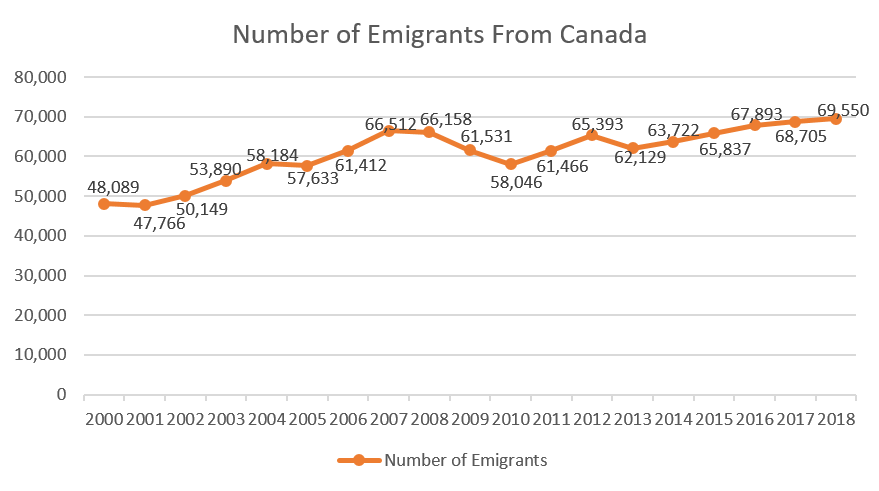Immigration, Emigration and Retention (Under Development)
File:Outmigration Presentation 20191009.pptx
Emigration
Permanent emigration refers to Canadian citizens or landed immigrants who leave Canada to acquire permanent residency in another country, while temporary emigration refers to Canadian citizens and immigrants living temporarily abroad who have not maintained a usual place of residence in Canada
Outmigration
The action of leaving one place to settle in another, especially within a country.
- Based on Canadian Censuses the net exit rate of emigration for the naturalized portion of the Canadian population for the 1996-2006 period is 4.5%.
- A similar census-based estimate for the Canadian-born population yields a low net exit rate for the 1996-2006 period (1.33%) which translates into 500,000 Canadian-born leavers over the 1996-2006 period.
- Over the period 1996-2006 the naturalized group exhibited a three times greater emigration rate than the Canadian-born population.
- Moreover, given these exit rates for both the Canadian and foreign-born populations, a stock of 2.78 million Canadian leavers living abroad can be estimated.
- Canada has experienced a unique problem as a subset of its immigrants, approximately 10%, leave after ascension to citizenship.
- Most Canadians abroad feel strongly “Canadian” and strongly desire to remain connected to Canada.
- As of 2016, about 783,000 Canadians lived in the United States, accounting for less than 2 percent of the roughly 44 million U.S. immigrants A quarter of the CND diaspora in the US is significant.
Immigrant Retention
Increased immigration is designed to tackle the issue of retention, but once permanent resident status is issued, a newcomer is free to live anywhere in Canada. And in a significant number of cases, they decide to leave. Simply increasing immigration will not solve economic and demographic issues in Atlantic Canada. The real challenge is immigrant retention. New Brunswick, Newfoundland & Labrador, Nova Scotia and Prince Edward Island are all struggling with the economic impact of an aging population and shrinking labour force. Between 2011 and 2015, Nova Scotia retained 72 per cent of its immigrants, compared to 56 per cent in Newfoundland & Labrador, 52 per cent in New Brunswick and just 18 per cent in Prince Edward Island. Every other Canadian province has a retention rate of 80 per cent or more.

